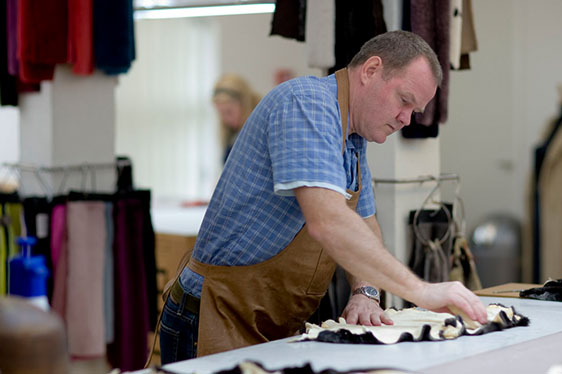Sustainable Fur Forum

Sep 29 2020 - The fur industry is a good example of circular production and should be an inspiration for the fashion world. That was one of the conclusions from the participants in the first Sustainable Fur Forum (SFF) webinar on 29 September. During the online event, four different speakers, including two MEPs and a sustainable fashion campaigner, discussed why circularity is an integral part of, and a priority for the fur sector.
The outburst of Covid-19 exposed the flaws in the fast fashion system. When the shops started to close, clothing began piling up in warehouses, demonstrating the unsustainability of the model. During the lockdown, we lost two seasons, 30 drops and 210 days of fashion, said Johanne Stenstrup, author, entrepreneur and sustainable fashion campaigner. Consumers’ attitude towards their dressing changed, as they had time to reconnect with their clothes.
"The future of fashion should be about our relationship with our clothes, the craftsmanship, the materials, and the people behind the production," she added.
MEP Juozas Olekas (S&D, Lithuania), Chair of the SFF, pointed out that "fast fashion based on ‘produce-consume-dispose’ has to be replaced by a slow fashion model with a longterm vision for people and the environment."
This transition needs the involvement of all actors, with a 360-degree approach.
"If the European Union wants to be a global leader in achieving climate goals, fashion is certainly a good starting point," said Mr Olekas.
The European Green Deal and Circular Economy Action plan (CEAP) are a historic opportunity for the European fashion sector to improve its performance and contribute to a green transition. The EU needs an ambitious and comprehensive Textile Strategy encompassing all fashion products, based on the hierarchy 'eco-design, reduce, repair, reuse, recycle, dispose of'.
In this regard, the fur sector can be an inspiration for the fashion world. It is the perfect example of a circular production system with upcycling taking place throughout the value chain. Fur is a natural, biodegradable, long-lasting and reusable material. With proper care, fur garments can last for several decades.
Mette Lykke Nielsen, CEO at Fur Europe, insisted on three essential elements that should be included in the EU Textile Strategy: boosting the reuse of garments, the traceability of supply chains and developing eco-design measures.
Finally, MEP Pietro Fiocchi concluded that the fur sector should be treated equally as all the other livestock sectors because it is subject to the same European regulations. This will be further discussed during the next SFF webinar, which will address the future of animal welfare in the EU.
For further information about the Sustainable Fur Forum, please contact:
melanie@sustainablefur.eu
cynthia@sustainablefur.eu
rodolphe@sustainablefur.eu